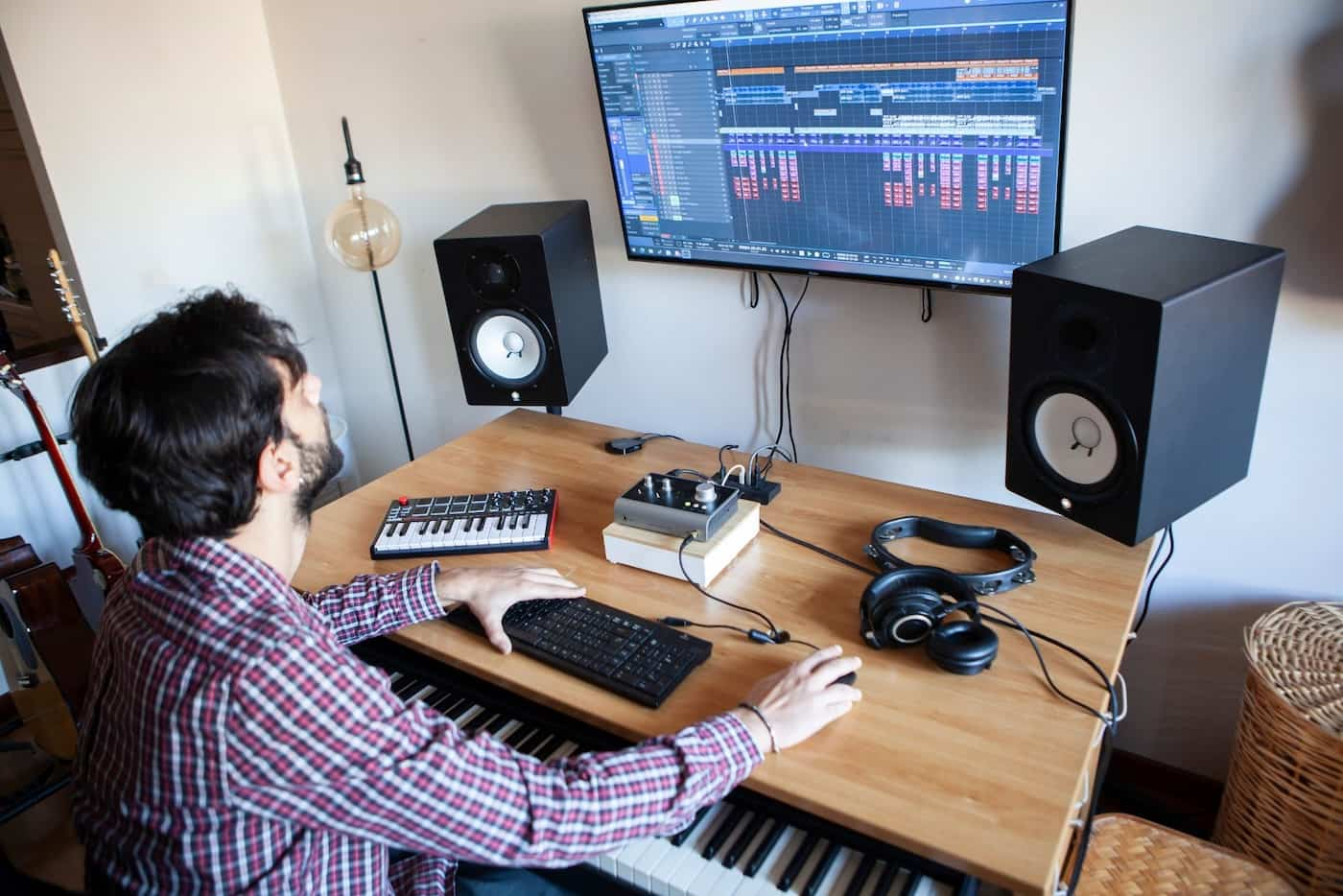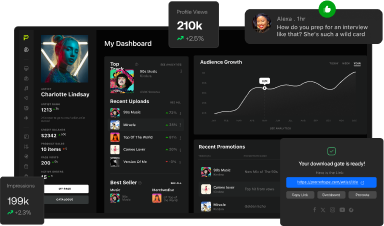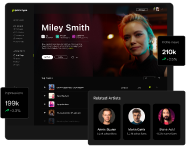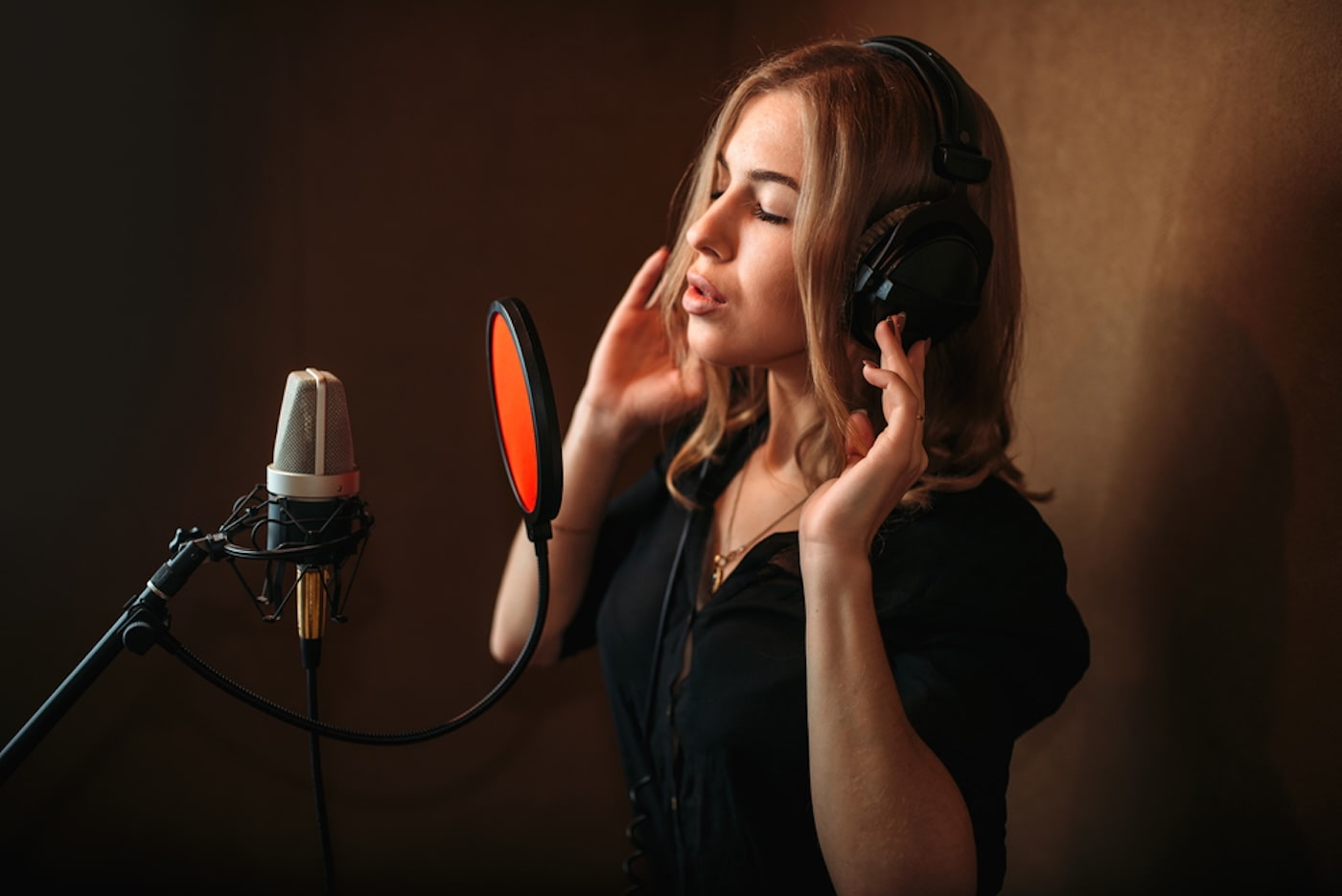
Producing music is a complex process that involves a series of steps and tools to bring creative ideas to life.
Learning how to start producing music like a professional can not only streamline your workflow but also enhance your creative abilities.
This guide explores the workflow and tools used by professional music producers and how you can incorporate these into your own productions.
Get Early Access
To Promo Hype
The Core Processes Of Music Production
Understanding how to create music like a professional requires a clear grasp of the core processes surrounding music production.
This begins with the overall workflow, from composing music and recording vocals to editing and mixing your audio files.
It can also include learning music theory for producers, progressing to advanced music theory, and areas like sound engineering.
Let’s take a brief look at the core processes of music production that a successful music producer uses:
- Songwriting and composition: The music production process often begins with songwriting and composition to create the overall song structure. This includes determining the key the music is in, as well as the main melody, harmonies, and other elements of the song structure. While some music producers also serve in this capacity, it’s less common in specific genres, particularly electronic music production.
- Instrumental arrangements: Music production for bands and singers often includes instrumental arrangements and production techniques to shape the overall sound. This includes layering different sounds in the mix to create a sense of atmosphere and character. A classic example of this approach to music production is evident in George Martin’s iconic instrumental arrangements for the Beatles.
- Recording vocals and instruments: Band-focused music production processes are also employed for recording vocals, instruments, and other sounds to be used on tracks. This includes tracking, in which multiple individual tracks are combined, and capturing raw audio to run through various effects units. Beginner DJs have numerous affordable options for microphones that enable them to record singers and instruments without a large budget.
- Editing audio: The next core step in music production is editing, where the recorded audio, samples, and MIDI instruments are reshaped using effects and other processes. During editing, timing is refined, mistakes are corrected, and the producer enhances elements to amplify their impact. This is achieved through plugins for digital audio workstations and tools that can be easily integrated into a production workflow.
- Mixing and mastering: Lastly, mixing and mastering are used to bring all of the individual tracks that comprise a song together for a cohesive sound. This process prepares music for professional media, whether being broadcast on the radio or released in a digital file format.
Your approach will be influenced by your genre, with distinct music production processes for bands compared to those for electronic music.
Before you begin producing music, research the common studio setup types used for your preferred genre to see what you’ll need.
Learn more about music production in Promo Hype’s Community.
Music Producer Vs. Songwriter: Key Differences
Understanding what music producers do requires an understanding of the distinct roles that producers and songwriters play.
While many producers serve as songwriters on tracks, there are important distinctions between the two roles.
Both are fundamental for making music, but clarity on what distinguishes one from the other will improve your music production journey.
Here’s a brief overview of the core focus and roles of songwriters, as well as their relationship to the music production process.
- Writing lyrics: One of the core processes in writing a song is crafting the lyrics, which music producers usually have little to no involvement with.
- Composing melodies and arrangements: Once the lyrics are written, the songwriter composes melodies for vocalists, along with other instrumental arrangements.
- Determining the emotional qualities: The songwriter is also responsible for establishing the tone and emotionality of a particular song.
- Collaborating with other musicians: If the music requires collaboration with other artists and musicians, the songwriter typically leads the coordination efforts.
- Performing at live events: While some songwriters prefer to sit behind the scenes, singer-songwriters are also performance artists. With complete control over all aspects of a song, singer-songwriters also create an image around their identity.
While some producers do handle these tasks, many leave it to songwriters and follow up with editing, mixing, and other production techniques.
How To Produce Music Like A Pro In 2025: Step-By-Step
If you’re a newcomer to music production or looking to explore new techniques, you can learn from the experiences of professionals.
Here’s everything you need to know to produce music like a pro, from the core recording equipment required to sound design techniques.
Step 1: Gather The Essential Equipment
Producing music like a professional begins with understanding the core equipment they use for recording, editing, mixing, and mastering tracks.
Let’s break down the essential music production equipment needed to perform the techniques that professionals adopt.
Laptop/Computer
Producing music like a pro requires a computer or laptop that can handle large projects, with a multi-core processor with a clock speed of at least 2.4 GHz.
A minimum RAM of 16GB is also required, along with a Solid State Drive (SSD) to speed up performance when making music.
MIDI Controller
Another core feature of a professional workflow is a MIDI controller, which replaces the need to use the piano roll in a DAW.
The best MIDI controllers and keyboards enable comprehensive mapping of parameters to knobs and sliders, allowing for streamlined production.
Audio Interface
The audio interface is the central hub of music making, connecting traditional and electronic instruments to the software.
If you’re approaching music production for bands, a larger audio interface with more inputs is essential for recording live sessions.
Headphones/Speakers
High-quality headphones and studio monitors are also essential for a home studio that can produce sounds on par with professional standards.
These ensure your own music sounds accurate on other systems, with mixing and mastering techniques delivering these results.
Microphone
If you’re recording vocals or samples, a quality microphone is essential, with both dynamic and condenser microphones to choose from.
The latter is more common in studios for recording singers and musicians, while dynamic mics are better suited to live performances.
Step 2: Set Up A Home Studio
Once you’ve lined up all your equipment, it’s time to focus on building a home studio to transform a musical idea into a fully fledged track.
While many beginner producers use their standard desk, there are ways to elevate your studio to music industry standards.
Here are some tips for setting up a home recording studio that reflects best practices and industry trends:
- Choose a quiet room: Background noise and other distractions can impede your audio recordings and workflow, whether it’s street noise or from boisterous children.
- The orientation of the space: Optimizing a home studio for acoustics means choosing a space that allows you to position your studio monitors in a way that minimizes standing waves and reflections.
- Include acoustic treatment: Further improving the audio quality of recordings is acoustic treatment, which can be used to absorb sounds and reduce reflections.
- Complete soundproofing: If your budget permits, you can install complete soundproofing in your home studio for additional control over recording sessions.
- Quality microphone stands: Producers who frequently record vocals and instruments should invest in high-quality adjustable stands to facilitate quick setups for recording sessions.
By positioning your microphones and speakers optimally, you can produce sounds with greater accuracy and fidelity.
Step 3: Learn Basic Music Theory
Music production doesn’t require an in-depth knowledge of music theory, particularly when focused on specific electronic music genres.
That said, a grasp of music theory is undoubtedly beneficial for production techniques, particularly if you’re involved in compositional elements.
Understanding how notes and keys interact, as well as other music theory principles, will enhance the production process.
It will also improve your ability to collaborate with experienced musicians on projects, bouncing ideas and composing music together.
Some of the basic music theory that music producers should be familiar with include:
- Notes, pitch, and duration: Notes provide the foundation for compositions, whether individually as melodies or in combinations as chords. The term pitch refers to how low or high the note is, while duration indicates how long a particular note is held.
- Major and minor scales: Following on from notes are major and minor scales, which each have their own characteristics that can be used to create mood. You can use tools like the Circle of Fifths to understand the relationship between different keys and their related scales.
- Chords and chord progression: Building on notes and melodies are chords, which are clusters of compatible notes played in unison. Different types of chords can be expanded into chord progressions that take the listener on a musical journey.
- Rhythm/tempo and time signatures: The glue that holds a piece of music together is the tempo, which indicates the speed at which the music is performed. There are also different time signatures, which indicate the number of beats in a measure and the note value that represents one beat.
- Melody and harmony: Melody and harmony are fundamental to lead vocals and other lead instruments used in a song. Melody represents the sequence of notes used, while harmony indicates how these notes correspond to chords.
- Song structure: Each of these elements combines to form the overall song structure, which varies between music but typically combines specific structural elements. For example, most pop songs use the Intro – Verse – Chorus – Verse – Chorus – Bridge – Chorus song structure.
While you don’t have to read sheet music to understand these concepts, learning this will also enhance your approach to composing music.
Music theory is a broad topic, and many music producers build up their knowledge throughout their careers.
Step 4: Master A Digital Audio Workstation (DAW)
Another essential step for producing like an experienced professional is to strive for mastery of your chosen music production software.
Since your software is the brain of the operation, this means exploring the manual and other resources to understand how it works.
The best DAWs offer many features for music production, which can be overwhelming for newcomers when they approach the craft.
Let’s explore some methods you can implement that can streamline your approach to learning your DAW:
- Learn the user interface and keyboard shortcuts: Whichever DAW you’ve opted to use, you should start by dedicating time to exploring the UI and keyboard shortcuts.
- Use online resources and tutorials: There is no shortage of YouTube tutorials and other resources that can help you out if you’re struggling with a DAW.
- Experiment with presets and templates: Exploring presets and experimenting with settings is an excellent way to learn how different parameters affect sounds.
- Start with simple projects: While it can be tempting to jump straight into complex compositions, starting small will make the process easier to digest.
Mastering a DAW is an ongoing process that doesn’t happen overnight, but over time, your skill set will continue to expand.
Step 5: Build A Library Of Plugins & Sounds
Music production requires a solid library of sounds to edit and arrange in songs, along with plugins for adding effects, mixing, and mastering.
There are plenty of free VST plugins you can use, along with paid plugins that emulate hardware used in professional studios.
Your choice of plugins will depend on your chosen genre, with warm, analog-sounding plugins for bands and others better suited to dance music.
For sound libraries, there’s the option of purchasing sample packs, which include percussion hits, loops, vocal snippets, and sound effects.
If you have a microphone, however, you can use this for recording your own sounds, saving money on potentially expensive libraries.
Get Early Access
To Promo Hype
Step 6: Learn From Music Industry Veterans
In addition to using online courses and tutorials to master your DAW, you can also draw from the experiences of music industry veterans.
Many of the best music producers are happy to share their workflow with fans, exploring composition and other technical aspects of production.
These range from studio tours and how to optimize your setup, to applying effects and mixing tools to achieve a specific sound.
You can create a shortlist of the music producers who inspired you to start production and seek out YouTube channels and other resources.
If you’re also composing songs and writing lyrics, research other artists in your genre and see if they have helpful online content.
By drawing directly from professionals with tried-and-tested music production tips, you can refine your workflow accordingly.
Step 7: Begin Composing Music
If you’re a producer who focuses primarily on the recording and editing side of the process, you should consider composing original music.
This will help you to understand song structure better and practically apply the basic music theory outlined above.
A popular approach to mastering composition is to start learning an instrument, which has the added benefit of inclusion in your productions.
You can also more effectively collaborate with other musicians, riffing off their ideas and contributing to the composition process.
Step 8: Experiment With New Hardware & Instruments
Many of the most iconic producers and songwriters of all time are known for their experimental approach to the art form.
Producers like Aphex Twin and Flying Lotus, as well as bands like Radiohead, have earned their strong reputations through this approach.
New producers can apply this approach to their own music, whether expanding their collection of MIDI-based hardware or using traditional instruments.
This experimentation is the key to happy accidents, discovering unusual sounds and combinations for a unique listening experience.
Discover more: How to get signed by a record label.
Step 9: Learn Mixing And Mastering
Mixing and mastering are other core aspects of professional-level music production that are essential for polished results.
It begins with processes like gain staging and EQing, ensuring all elements of the track are balanced with optimized signal quality.
Reverb and delay are sometimes used to expand the soundscape, while audio compression and limiters further refine the audio.
While established artists typically hire a professional mastering engineer for their releases, it’s worthwhile to learn the basics yourself.
This will ensure your music sounds its best, whether you’re submitting it to radio stations or independent record labels.
Step 10: Collaborate With Other Artists
Learning how to create songs like professional music producers is easiest when drawing on as much knowledge as possible.
While online tutorials are great shortcuts for many processes, collaboration provides hands-on experience with other musicians.
It helps you to quickly learn concepts, gain insights into different instruments, and enhance your overall repertoire of production skills.
Partnering on collaborations is also highly effective for promoting your music to a broader audience and building a fan base.
If the chance arises, work on projects with new artists and other musicians whenever possible, refining your production style accordingly.
Tips For Becoming A Successful Music Producer
Success doesn’t happen overnight, but there are steps you can take to become a music producer with a thriving career.
Here are some tips you can use to increase your chances of success and get your music heard by the right people:
- Reach out to record labels: The ideal goal for many music producers is to secure a record deal with a major label and gain access to the international market. While major labels might be out of reach for many, there are plenty of independent labels looking for new talent to sign.
- Perform your music to a live audience: Singer-songwriters and bands have long used live gigs to promote their music and build an audience. The ongoing popularity of hardware-based gigs for electronic music presents an opportunity for dance music producers to explore.
- Check out music production tutorials and courses: There is no shortage of online tutorials on YouTube offering in-depth explanations of music production equipment and processes. You can also sign up for music production courses that dive into the subject in detail.
- Use distribution and promotion services: With multiple streaming platforms to juggle, distributing and promoting music can be challenging. Fortunately, digital music distribution and promotion services can streamline these processes to help you share your own songs worldwide.
- Consider attending a music production school: If you have the time and financial resources available, dedicated music production schools can provide rigorous training and offer valuable career opportunities. Many successful artists have emerged from such schools over the years, becoming key players in the music industry.
- Network with local artists and other music producers: Producers who have successful independent artists in their social circle often utilize these connections to expand their networks. This can lead to collaborations and multi-artist events that raise your profile as a producer.
By refining your learning process and building industry contacts, you can increase your chances of developing a dedicated fan base.
Unlock global music distribution and promotion with a Promo Hype membership.
Reach An International Audience With Promo Hype
Whether producing music for local bands or creating underground techno, your finished results deserve the biggest possible audience.
Promo Hype’s services encompass the most popular music genres, providing independent artists with a global reach.
By signing up for a Promo Hype membership, you can access the following services:
- International music distribution on all major streaming platforms, including Spotify, TIDAL, Apple Music, and Amazon Music, has a large user base ready to hear your tracks. With Promo Hype, you can schedule and distribute your music across these platforms with ease.
- Dedicated promotional tools to build your online presence: Once your music production efforts have been shared online, you’ll need to promote them to your audience. Promo Hype’s Promotional Toolkit includes everything you need to manage marketing strategies across multiple platforms.
- A personalized Dashboard with data analytics: Music lovers use a range of platforms to connect with their favorite bands and artists. With the Promo Hype Dashboard, you can understand their behaviors through a range of robust metrics.
- Access to the Promo Hype Community hub: If you’re struggling with your own music, Promo Hype’s Community provides a lively avenue for learning how to write songs. You can share your insights with like-minded producers and develop a creative process with a unique style.
With an expanding user base of talented independent artists, Promo Hype covers everything you need to grow your music career.
Summary
The music creation process can be challenging to master, but there are many methods you can adopt that are widely used by professionals.
This step-by-step guide to producing music like a professional covers the common techniques used to create popular songs.
By responding to constructive criticism and refining your approach, your music production techniques will continue to improve.
Get Early Access
To Promo Hype
Join Promo Hype






